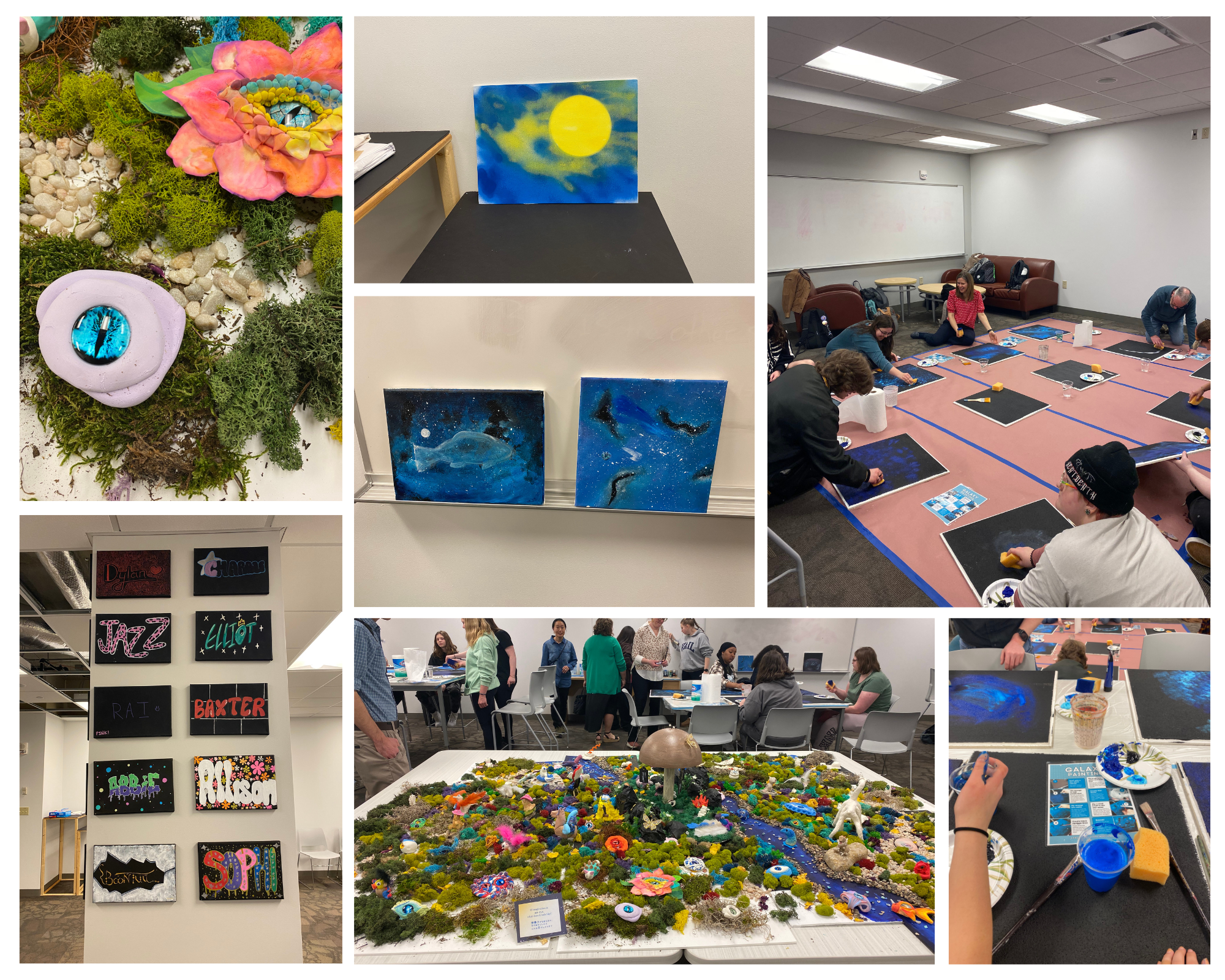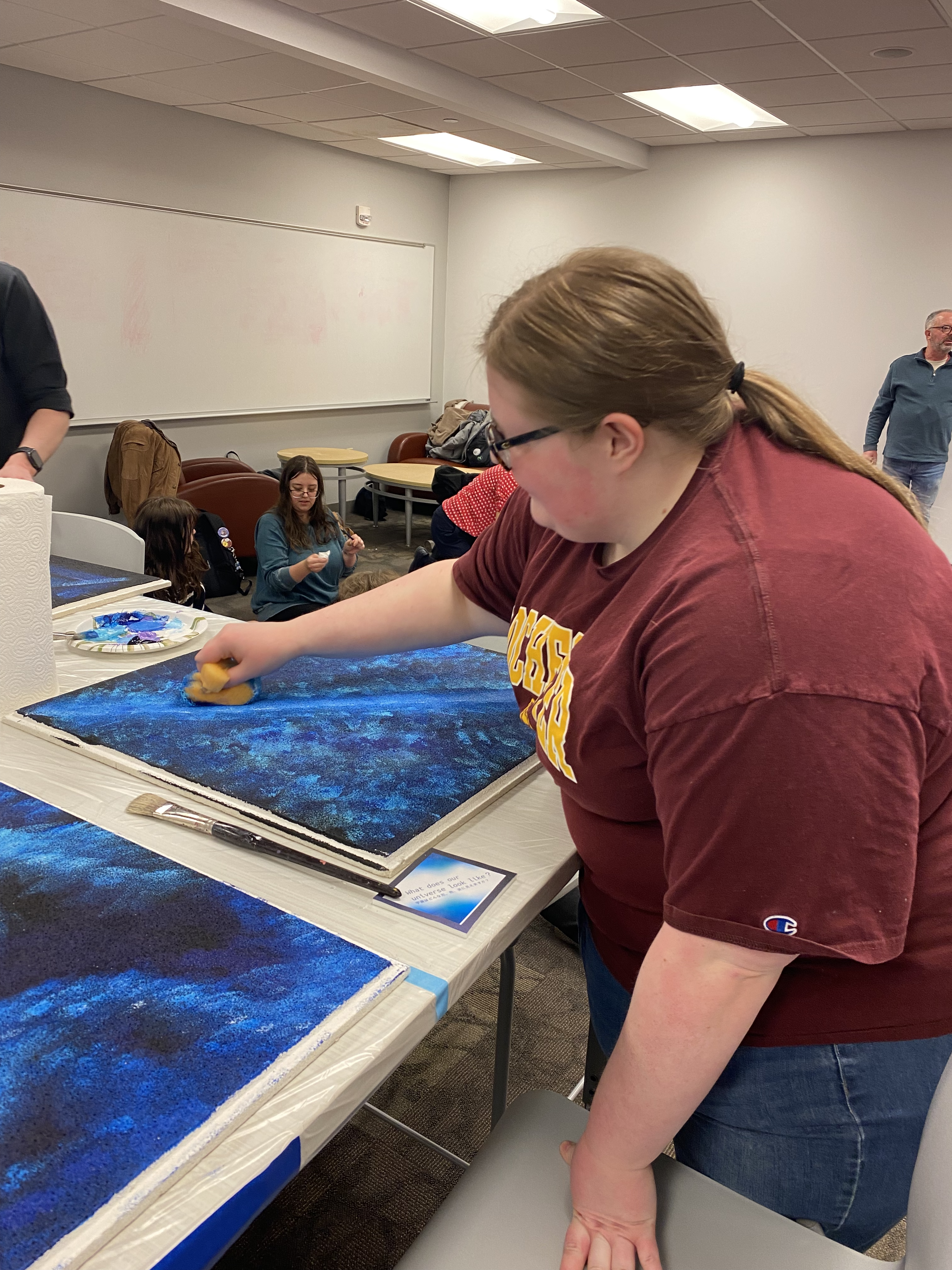Creative Expression in the Classroom and Art Studio
Authored By: wells438 04/29/2024
At the University of Minnesota Rochester, two professors are collaborating to bring two divergent disciplines together to enhance learning and increase participation in the classroom: math and creativity.
Assistant Professor Yuko Taniguchi, M.F.A. who teaches creative writing, and Senior Teaching Specialist Jered Bright, M.S. who teaches math, are helping students explore new creative outlets through courses designed to question traditional approaches to mental health maintenance and healing by using creative activities evidenced by qualitative research.
“The experience in these courses requires students to be both a participant and a researcher -- that is, they experience the intervention and they have to make sense of the data coming from the intervention. Often researchers design an intervention, carry it out, analyze it and report it, but do they actually experience what they design too?” said Bright.
This unique approach to research has excited students and encouraged them to be more engaged in their classwork and activities.
“Engagement in the creative process requires risk taking, decision-making, navigating ambiguity, communicating with peers and persistently showing up to complete their work. The development of a creative mindset is relevant to the mindset future health care professionals need to navigate complex issues,” shared Taniguchi.
Projects in these classes have included an imagination garden where students were given a prompt of “If imagination is an eye, what does it look like?” and designed their own eye using clay and paint. Student’s have also been tasked with creating a representation of their safe space through using words, objects, photos and painted landscapes to visually represent their mental safe spaces.
“Investigation of Mental Health Using Creativity and Qualitative Analysis has been a great course for me overall. It's helped me to explore new creative outlets, and to reflect on my own creativity. The course itself has honestly become a source of stress relief for me,” shared current UMR student, Abigail Duin.
While beneficial for students to introduce creativity into the classroom, this is not always an easy task due to limited resources and space for art.
“I use a lot of art materials for my teaching, and people see me pushing a cart of art supplies all the time. I have to bring them from my office to various classrooms,” said Taniguchi. “This has been my standard practice for my research and teaching. I am implementing art workshops at sites like research centers, hospitals and art museums that do not have studio space. So I need to become an art studio.”
This roadblock and the success of students in these two courses were some of the biggest motivators for the creation of an art studio on campus. In January 2024, Taniguchi was awarded the CEI MPACT 2025 Education Grant to repurpose a classroom in 318 Commons to an art studio to be used by faculty and students.
In this new space, students and faculty are able to move freely and walk around, find materials and make a mess all while exploring new ideas and taking their time to complete a project. Materials provided include art supplies they may not have had access to otherwise.
“I love that [the art studio] gives me the ability to take a break from the stress in my life, and allows me to spend time having fun and creating art. I always feel welcome in the studio, and it has a great sense of community that enhances the positive experiences I have there,” shared Duin.
The art studio officially opened in March 2024 with a painting event where students and faculty were able to paint ceiling tiles in a galaxy theme using paint, glitter, sponges and other techniques.
“When we have space to be creative, opportunities present themselves that might not have previously been available,” shared Bright. “If we want to understand the essential pieces to engagement or participant voice, we need to use proven research methods -- and qualitative research methods help us to better understand the creative space and its products.”
In the future, Taniguchi hopes to expand the art studio to UMR faculty and staff by offering a workshop to inspire more ways to use the new space. For now, many students are finding comfort and new ways to express themselves through art.